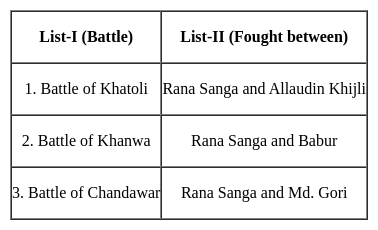SSC CGL Tier I Mock Test - 15 - SSC CGL MCQ
30 Questions MCQ Test - SSC CGL Tier I Mock Test - 15
Select the related word from the given alternatives.
Bhangra ∶ Punjab ∶∶ ? ∶ Uttar Pradesh
J + R' means 'J is the father of R', 'J – R' means 'J is the mother of R', 'J ÷ R' means 'J is the son of R' and 'J × R' means 'J is the brother of R'. If S + M × T ÷ F – K, then how is S related to K?
Select the correct mirror image of the given figure when the mirror MN is placed to the right side of the figure.


The sequence of folding a piece of paper and the manner in which the folded paper has been cut is shown in the following figures. How would this paper look when unfolded?

Three among the four pairs belong to the same group. The odd one out is
Seven people, A, B, C, D, E, F and G are sitting in a straight line, facing South. Only two people sit to the left of A. Only three people sit between E and A. D sits at one of the extreme end. G sits to the immediate right of D. C sits in the middle of the row. B is not the immediate neighbor of C. Which among the following statement is true?
Select correct combination of mathematical signs that can sequentially replace the * signs and balance the given equation.
26 * 12 * 12 * 3 * 4 * 2 * 2
Which of the following pairs is/are incorrectly matched?

The marked price of a television set is ₹18,000. A shopkeeper allows a discount of 40% and gets a profit of 10%. What is the cost price of the television set?
The given pie chart represent the popularity of ice-cream flavours in a certain city. Study the pie chart and answer the question that follows.

If 20% of the 'others' category ice-cream is mango flavour and 10300 surveyed people preferred mango flavour, then how many people were surveyed?
Given below are four jumbled sentences select the option that gives their correct logical sequence
A. One common mistake that many people have made is this; they have thought that it would be a very good thing if everybody had exactly the same amount of money, no matter whether they worked hard or lived quite idly.
B. Now that is a very great mistake, because there simply is not enough money to make everybody rich.
C. And they have imagined that if all the money in the country were equally divided everybody would be rich
D. They forget that very few people would work at all if it were not for the money their work brings them, and that without work there would be no money
Select the most appropriate synonym of the given word.
Fetish
Select the most appropriate ANTONYM of the underlined word.
Her parents forbade her to marry her lover.
Select the correct indirect form of the given sentence.
Oliver said to his teacher, "She had taken my notebook."
Select the most appropriate option to substitute the underlined segment in the given sentence. If there is no need to substitute the underlined segment, select 'No improvement'.
A well-known animal living in the polar regions are a penguins.
Direction: Select the most appropriate idiom for the underlined segment in the given sentence.
Without any question, Naresh is my good friend.

























